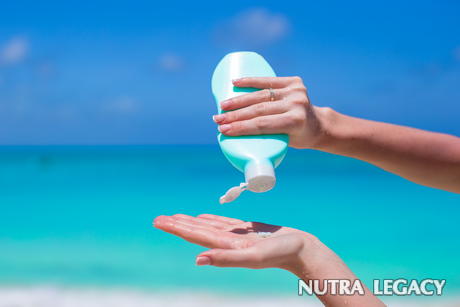Truth about SPF – Sun Protection Factor

- Skin cancer is the most common form of cancer and is also the most preventable through skin cancer awareness and skin cancer detection
- The best and most effective way to prevent skin cancer is preventing sun damaged skin or preventing a sun burn
- Skin cancer risk factors include age and skin sensitivity
- Always take precautions before going out to lay in the sun, such as using a product with at least an SPF of 15
Sun Protection Factor or SPF is a particular number on sunscreen labels indicating how long the lotion will protect your skin from the sun’s harmful UVB rays and, therefore, sunburn. However, sunburn is the least of your potential worries. These UVB rays are the major cause of sun damaged skin leading to wrinkles, freckles, aging skin and age spots. They can also affect your eyes and the body’s immune system. The worst-case-scenario is skin cancer.
Some countries have developed indexes that help forecast the intensity of UV rays. In the meantime, beach lovers and other outdoorsy types have sunscreens. But, these lotions are not miracle cures nor are they guaranteed safegaurds. The sun protection factor on a product’s label is merely a meter that allows tanning to ensue without overexposure to the sun. Many people believe that the higher the SPF number, the better the protection.
Nevertheless, the SPF doesn’t necessarily translate to a time limit in the sun. If you use SPF 30 instead of SPF 15, it does not mean that you can stay in the sun for that much longer. These numbers merely indicate the percentage of UVB ray filtration. Practically, SPF 15 products filter out 93 % of UVB rays while SPF 30 products filter 97%. This percentage decreases due to factors such as different types of skin, humidity, sweat and any contact with water. So, after a couple of hours, both SPF 15 and SPF 30 become ineffective and the difference between the two minimizes.
Just how long do you stay in the scorching sun? Your sunscreen may be SPF 15, 30 or more, but people with light skin usually notice some redness after 20 minutes. So, if you’re using SPF 30, then your equation would go something like this: SPF 30 x 20 min = 600 min/60 = 10 hours. In other words, you have some, albeit small, level of sun protection for almost 10 hours. Remember, it may take up to 24 hours to see a severe sunburn.
You know your own body. Be mindful of your complexion and the levels of melanin in your skin when approximating your sun tanning sessions. Melanin is one such chemical that helps in absorbing the UV rays. It determines a human’s skin color and people across the globe have a vast array of complexions due to varying levels of melanin. Therefore, they tan at different rates.
So, before you run off to the beach or your summer home for a dip in the lake, take a few precautions. Apply suntan lotion with a high SPF at least 20 minutes before going out in the sun, re-apply if necessary and wear branded sunglasses to protect your eyes from those damaging UV rays.
The information supplied in this article is not to be considered as medical advice and is for educational purposes only.
|
2 Responses to “Truth about SPF – Sun Protection Factor” | ||||||||||||||





 12 Sep 2008
12 Sep 2008
Oh, so I went out on a canoe a few years ago -- no sunscreen and I ended up getting second degree burns. The SPF on your sunscreen is totally important, pay attention and wear sunscreen!March 29th, 2009 at 11:28 am
You should also use the lowest SPF factor you can because sometimes a high SPF will not allow your body to sweat properly. I found this out the hard way after getting sun poisoning.January 18th, 2009 at 10:56 pm